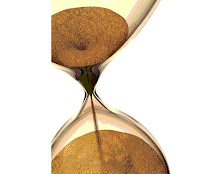Multiplication involving certain numbers can be computed using methods other than just standard multiplication. Sound confusing? Check out these nine tricks and see what I mean.
1. To multiply any number of two figures by 11: Write the sum of the figures between them. Thus, 34 x 11 = 374. (3 + 4 = 7; place the seven between the 3 and 4) When the sum is of the figures is more than 9, increase the left-hand number by the 1 to carry. Thus, 98 x 11 = 1078 (9 + 8=17; add 1 to 9 to get 10; place the seven between the 10 and 8)
2. To square any number of 9s immediately without multiplying: set down as many 9s less one (beginning at the left) as there are 9s in the given number, an 8, as many 0s as you do 9s, and a 1. Example: 999 x 999: put down 2 9s: 99. Then an 8: 998. then 2 0s (because you have 2 9s): 99800. The append a 1: 998001. That's it!
3. To square any number ending in 5: Omit the 5, and multiply the number as it will then stand, by the next higher number, and append 25 to the product. Example: 35 x 35. Omit the 5: 3. Next multiply 3 by the next higher number, 4: 3 x 4 = 12. Finally, append 25: 1225. That's the answer: 1225.
4. To square any compound fraction containing 1/2, like 5 1/2 for instance, Multiply the whole number by the next higher whole number and append 1/4 to the product. Thus, 5 1/2 x 5 1/2 = 30 1/4. (5 x (5+1) = 30; tag on 1/4 to get 30 1/4.)
5. To multiply any two like numbers with fractions that sum to 1 (for instance, 4 3/4 x 4 1/4), multiply the whole number by the next highest number (4 x 5) and append the product of the fractions (3/4 x 1/4). In the case of 4 3/4 x 4 1/4, 4 x 5 = 20. Then append the product of 3/4 x 1/4, 3/16. Thus, 20 3/16.
6. To multiply any two numbers whose ones digits sum to 10 and with like remaining numbers (for instance, 106 x 104) multiply the upper tens numbers by the next higher number (in this case, 10 x 11) and multiply the ones digits that sum to 10 (6 x 4) and then set the products next to one another successively (11024). Another example is 57 x 53. 5 x 6 = 30; 7 x 3 = 21; answer is 3021.
7. To multiply any number by any number of 9's (for instance, 28 x 99), append as many 0's to the multiplicand as there 9's in the multiplier (2800), and from this number subtract the multiplicand (2800 - 28 = 2772). The remainder is the answer. (2772)
8. Cross multiplication is a method of multiplying large numbers in a single line. Take the example 18 x 76. First multiply 8 x 6, set down the 8, and carry the 4. Next multiply 1 x 6, 7 x 8, add the products and add the carried 4 to give 66. Set down the 6, multiply 1 x 7, and add 6 to the product to give 13 which you set down to conclude the problem and yield the answer, 1368. (To learn this, work a few examples on paper.)
9. Here's a rather complicated trick for calculating any two 2-digit numbers:
Note: To do this trick, you need to know the squares of numbers up to 100 in advance.
1. Calculate the average of the two numbers.
2. Square your answer (here's where you need to know the squares of numbers through 100)
3. Subtract the largest of your original two numbers from the average
4. Square the answer
5. Subtract it from your answer in step 2 for the final answer
Example: 27 * 15First, calculate the average (42 / 2 = 21)Then square it (212 = 441)Now subtract largest number from the average (27 - 21 = 6)Square your answer (62 = 36)Subtract the square from the first square (441 - 36 = 405). And there's your answer: 405This works every time, but as the average and differences can end in .5, you have to know these squares as well.By the way, this trick works because (x + y)(x - y) = x * x - y * y
Subscribe to:
Post Comments (Atom)

No comments:
Post a Comment